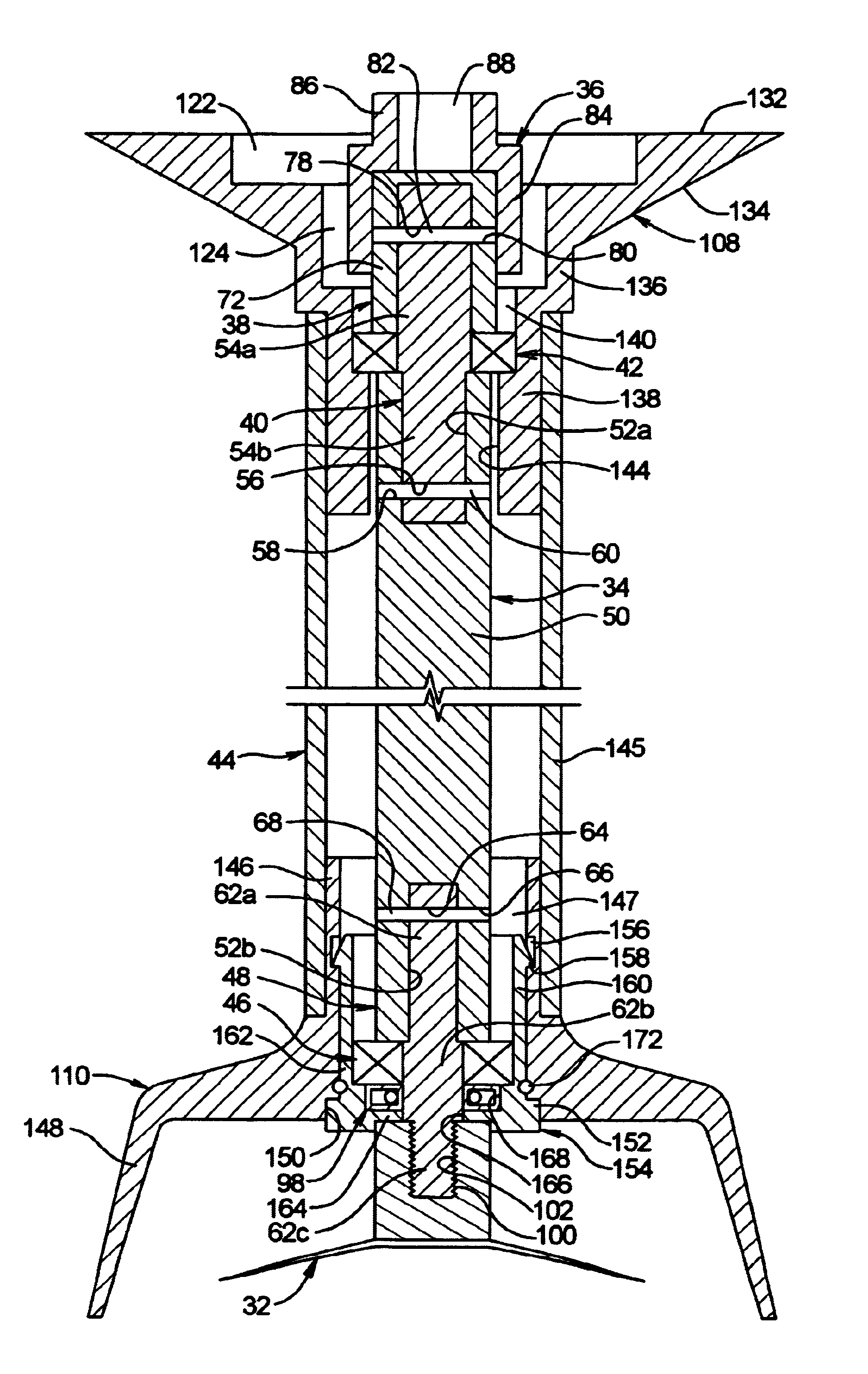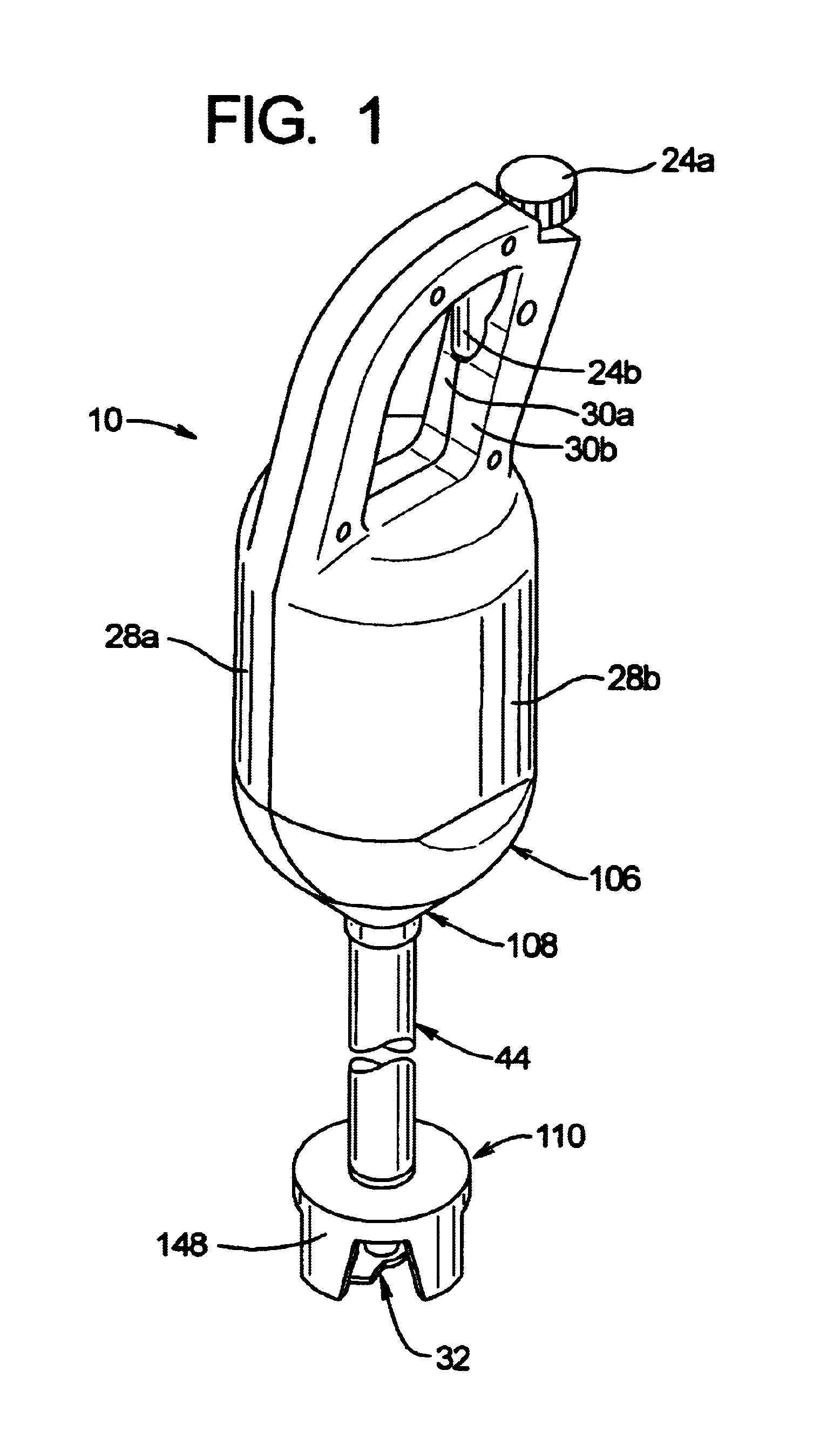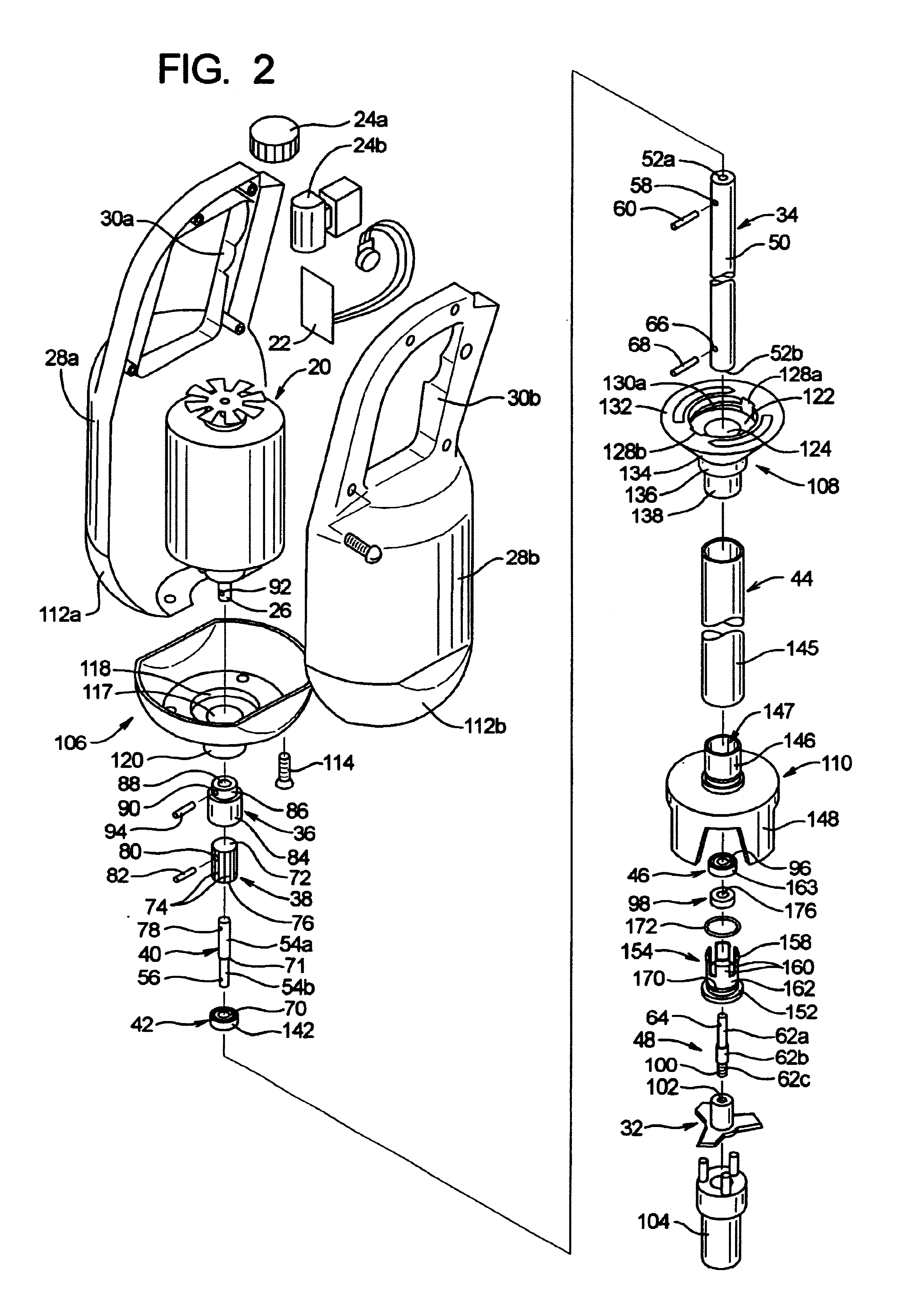Hand-held wand mixer
- Summary
- Abstract
- Description
- Claims
- Application Information
AI Technical Summary
Benefits of technology
Problems solved by technology
Method used
Image
Examples
Embodiment Construction
a. Motor and Motor Housing
[0030]FIG. 1 provides an isometric overview of a hand-held wand mixer 10 in accordance with the present invention, while FIG. 2 provides an exploded isometric view of the mixer. As shown in these figures, the mixer is powered by a generally conventional, variable speed electric motor 20, of a type typically used for such applications, and includes appropriate control circuitry 22 and manually operable switches and controls 24a,b. Output from the motor is delivered by a motor shaft 26, which typically rotates at speeds of approximately 3000 to 10,000 rpm. To provide splash protection and guard the user against shock and moving parts, the motor 20 is enclosed within a protective motor housing 28a,b having an integrated handle 30a,b that provides a handgrip for manipulating the mixer. The motor housing 28a,b, may be constructed of any suitable strong, lightweight material, such as plastic or aluminum, but is preferably molded from impact-resistant plastic due ...
PUM
 Login to View More
Login to View More Abstract
Description
Claims
Application Information
 Login to View More
Login to View More - R&D
- Intellectual Property
- Life Sciences
- Materials
- Tech Scout
- Unparalleled Data Quality
- Higher Quality Content
- 60% Fewer Hallucinations
Browse by: Latest US Patents, China's latest patents, Technical Efficacy Thesaurus, Application Domain, Technology Topic, Popular Technical Reports.
© 2025 PatSnap. All rights reserved.Legal|Privacy policy|Modern Slavery Act Transparency Statement|Sitemap|About US| Contact US: help@patsnap.com



